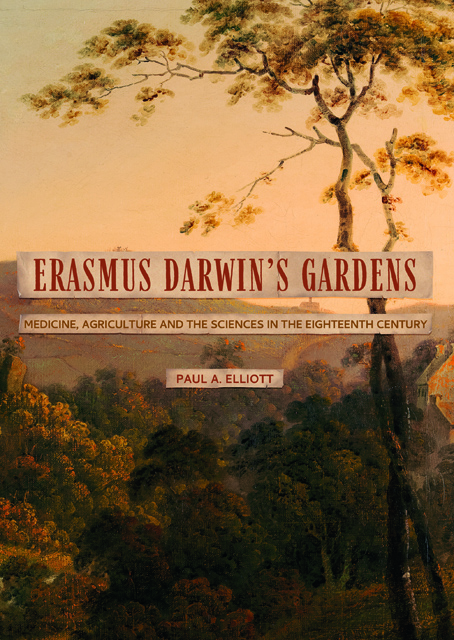Book contents
- Frontmatter
- Contents
- List of Figures
- Acknowledgements
- A Note on Plant Names and Identification
- Introduction
- 1 Lichfield and Derby Gardens
- 2 Medicinal Plants and Their Places
- 3 Agricultural Improvement: Enclosure and the Application of Science and Technology
- 4 Vegetable Physiology, Technology and Agriculture
- 5 Vegetable Pathology and Medicine
- 6 Among the Animals
- 7 Animal Diseases
- 8 ‘Eating of the Tree of Knowledge’: Forestry, Arboriculture and Medicine
- 9 Trees in the Economy Of Nature
- Conclusion
- Select Bibliography
- Index
- Garden and Landscape History
2 - Medicinal Plants and Their Places
Published online by Cambridge University Press: 14 January 2023
- Frontmatter
- Contents
- List of Figures
- Acknowledgements
- A Note on Plant Names and Identification
- Introduction
- 1 Lichfield and Derby Gardens
- 2 Medicinal Plants and Their Places
- 3 Agricultural Improvement: Enclosure and the Application of Science and Technology
- 4 Vegetable Physiology, Technology and Agriculture
- 5 Vegetable Pathology and Medicine
- 6 Among the Animals
- 7 Animal Diseases
- 8 ‘Eating of the Tree of Knowledge’: Forestry, Arboriculture and Medicine
- 9 Trees in the Economy Of Nature
- Conclusion
- Select Bibliography
- Index
- Garden and Landscape History
Summary
Georgian medicine depended heavily upon plant-based remedies, which were utilised by a range of healers and practitioners, including apothecaries and druggists, as well as in domestic medicine, and there was a widespread belief in the efficacy of what were designated the ‘virtues’ of some vegetables. The teaching of botany therefore remained a crucial component of the education of physicians, surgeons and apothecaries. Many Latin and English-language herbals or books listing and describing medicinal plants were available to guide the application of vegetable parts for healing during the seventeenth and eighteenth centuries. Some were new editions of long-established works or translations of French texts and others were marketed as ‘new’ books, although in practice there was much recycling of information. Some herbals were written or translated into other languages of the British Isles and Ireland – such as a Welsh translation of Nicholas Culpeper’s herbal (1818) – while others were written by or for women, such as Leonard Sowerby’s Ladies Dispensatory (1651) and Elizabeth Blackwell’s Curious Herbal (1737). Some, such as Henry Barham’s Hortus Americanus (1794), were aimed at – or derived knowledge from – the colonies and plantations in the Americas or East Indies, where colonists and transplanted populations faced new forms of disease and difficult climate conditions. Medico-botanical knowledge and plant materials were obtained from indigenous peoples (who had lived there a long time before the Europeans came) such as the Amerindians or those moved by trade and slavery, such as African slaves forced to Caribbean plantations in the Atlantic world, as Judith Carney, Richard Rosomoff, Londa Schiebinger and Suman Seth have shown.
Numerous healers, nostrum mongers, gardeners, publishers and other professionals advertised herbal remedies, plants and plant products through word of mouth and in shop windows, newspapers and pamphlets, often with fulsome testimonials from apparently satisfied customers restored to health. In the face of the polypharmaceutical (multi-drug) practices prevalent in the seventeenth and early eighteenth centuries and the growing importation of new plant products from around the world that were utilised in medical treatments, some apothecaries, healers and druggists strongly advocated what they idealised as a return to the homespun wisdom of local plant lore, which became a marketing point for some new herbals.
- Type
- Chapter
- Information
- Erasmus Darwin's GardensMedicine, Agriculture and the Sciences in the Eighteenth Century, pp. 53 - 90Publisher: Boydell & BrewerPrint publication year: 2021

